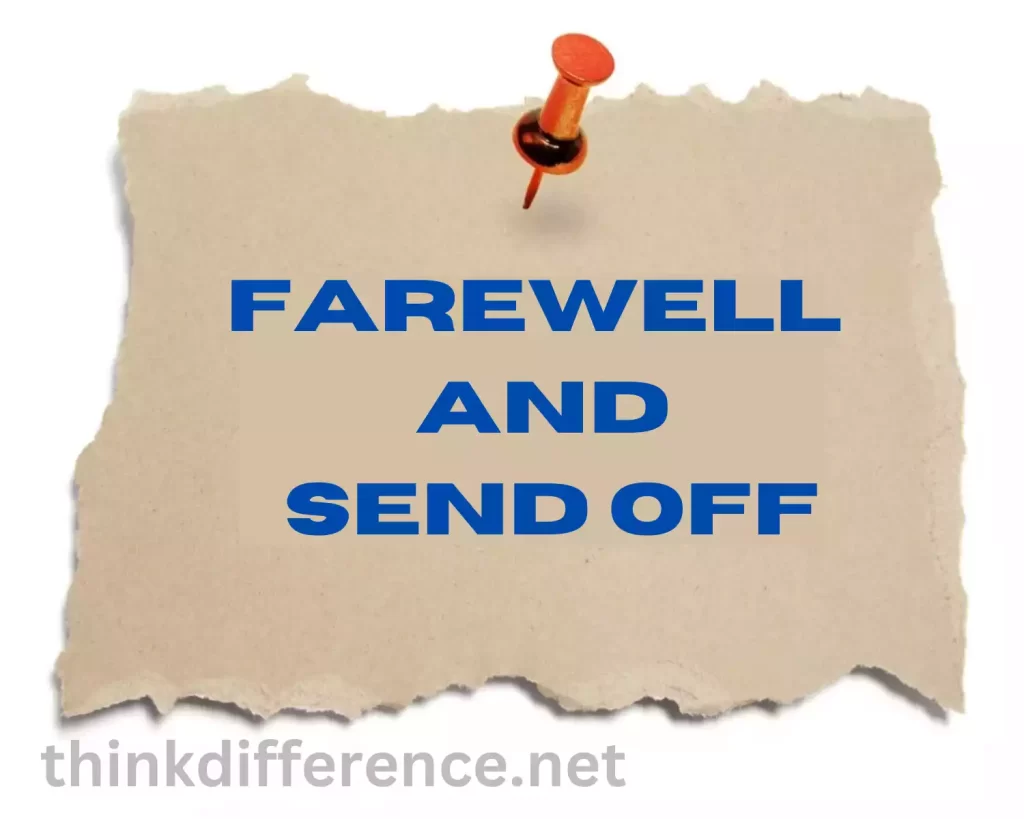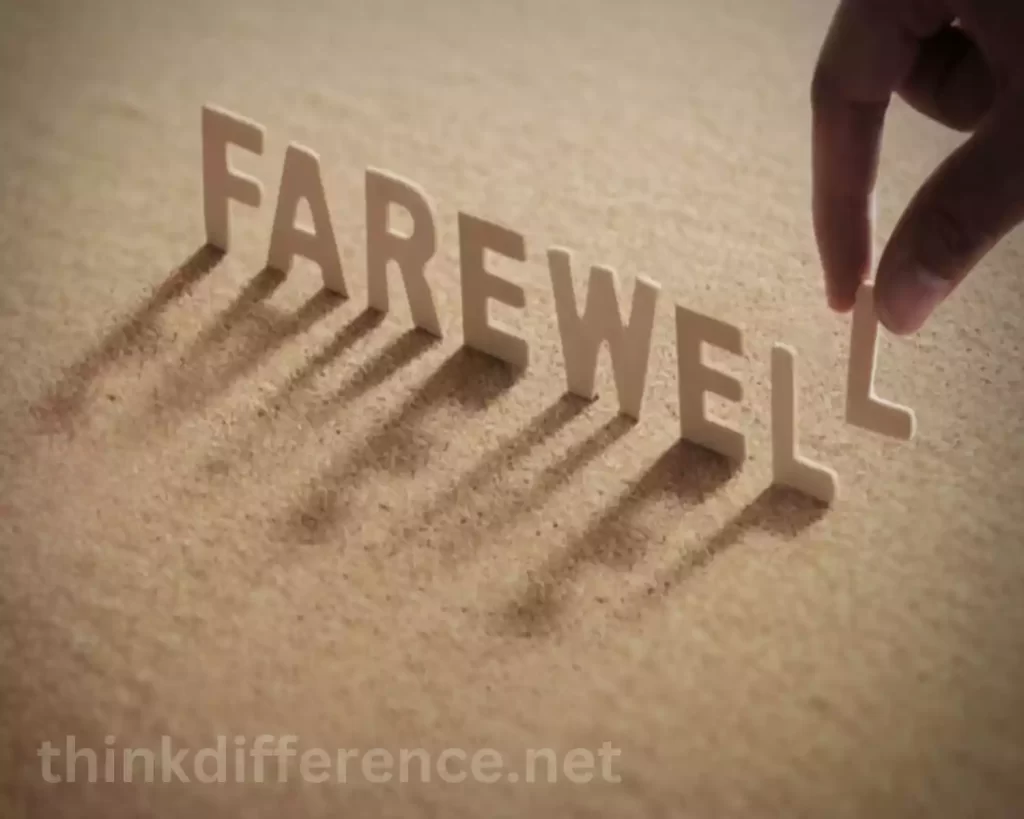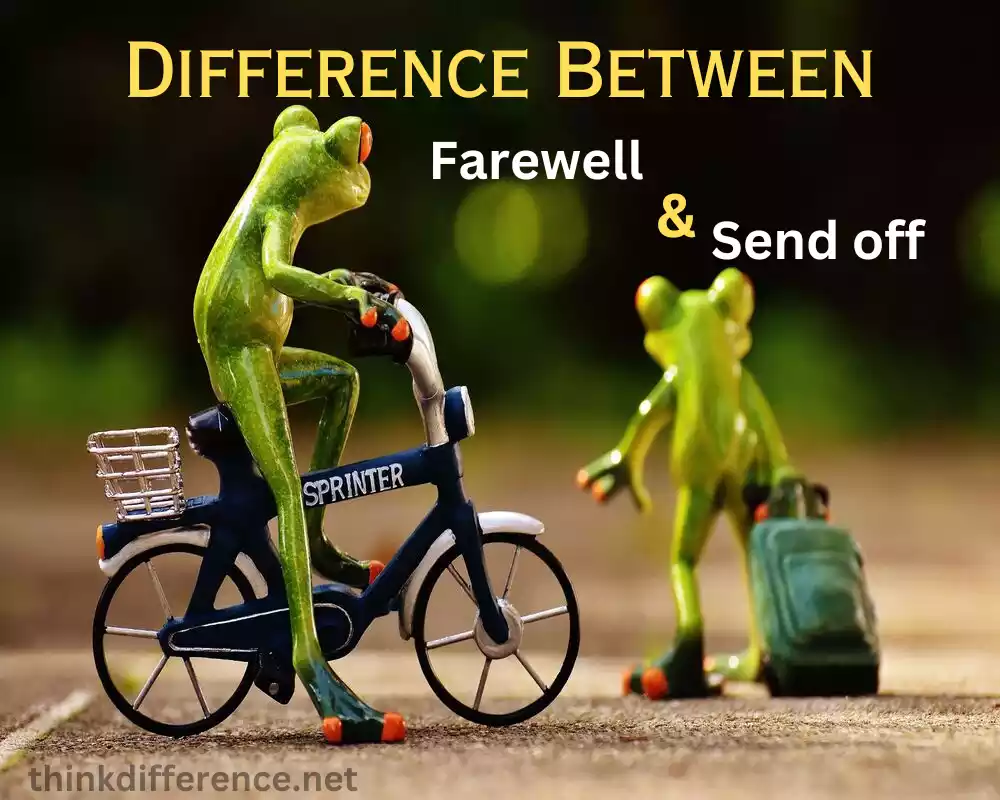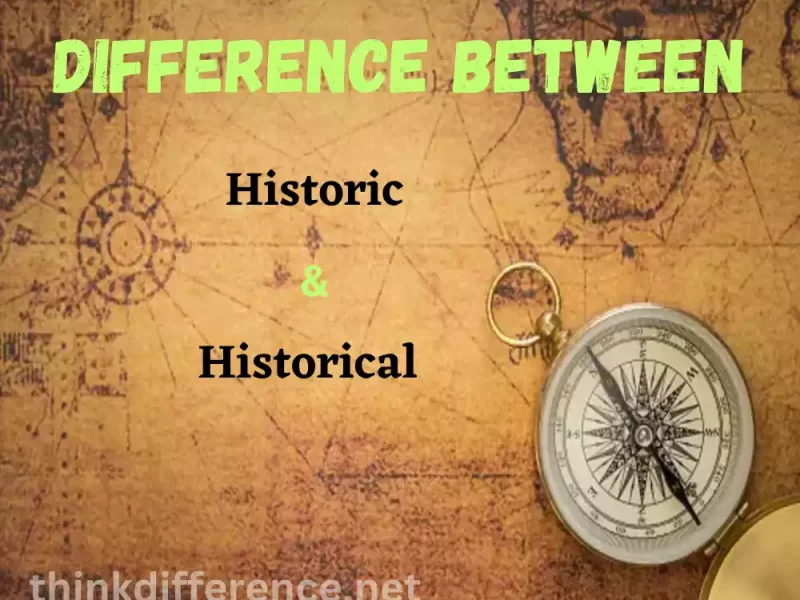Definition of Farewell and Send off
Farewell refers to the act of saying goodbye. Farewells can be formal, informal, or emotional farewells depending on what someone leaves behind – with memories lasting a lifetime often leaving places or organizations, so farewells should always be sentimental but professional in style.

Send-offs are events or ceremonies designed to recognize those leaving our world or marking its conclusion, including leaving those who are leaving, such as farewells. But unlike farewells, send-offs go beyond simply bidding someone farewell – they also pay their respects by way of speeches, gifts, or rituals that honor what’s gone.
Understanding the difference between Farewell and Send-off is important
Understanding the differences between send-off and farewell is important because each has distinct functions and requires various levels of formality. Mistaking one for another could cause unnecessary confusion, misinterpretations, and possible offense.
If Someone was leaving their job and their colleagues held a send-off event, this should not be considered as a farewell; such ceremonies celebrate someone’s achievements and contributions while farewell means simply saying goodbye.
Those left behind may benefit from hosting a farewell party as this allows them to express their emotions while saying farewell to loved ones – in contrast with formal and ceremonial send-off ceremonies which may only make matters more awkward and less emotional.
Ascertaining the difference between send-off and farewell events will allow you to choose an event suitable for your situation and show appropriate respect and recognition to anyone or the object being recognized.
Farewell
Farewell refers to the act of bidding someone farewell when leaving an organization, group, or place; such an expression of appreciation could take many forms; formal, informal, emotional – there’s always one.

Farewells can serve to mark an exciting new phase in a person’s life – such as leaving work or school or moving cities or countries. A farewell may take many forms from simple words said goodbye, to more elaborate ceremonies like leaving parties.
Farewells can be an opportunity for reflection and gratitude, offering the chance to thank someone for their contribution while offering best wishes in their new adventures. Farewells may be particularly emotional if there has been closeness with those departing, especially if there were strong bonds of affection shared.
Farewells can be an integral component of the transition. They give closure and offer peace of mind after major life events have concluded.
Send off
Send-offs are events or ceremonies intended to recognize those leaving or concluding something important in their lives or careers, celebrating or honoring both them and any objects associated with them that they leave behind. They serve not just to say farewell; instead, they pay respects as well by celebrating this transition with speeches, gifts, and rituals of respect for someone or something being celebrated or honored at this stage in time.

Send-off ceremonies serve to recognize significant achievements or milestones, from graduations at high school or college to honoring military servicemembers before deployment with send-off ceremonies that recognize both their hard work and accomplishments.
Send-offs focus on honoring and celebrating those being recognized, while farewells tend to focus more on saying goodbye and expressing emotion. Send-offs can include formal speeches, award presentations, or any type of ceremony to show our thanks and show support, like coworker gatherings.
Send-off ceremonies can be an ideal way of marking important life milestones with dignity and purpose. They allow loved ones and colleagues to come together, celebrate these important events together, and remember significant life moments together.
Differences between Farewell and Sendoff
Farewells and send-offs differ substantially; both acknowledge someone or something departing or ending its existence.
- Purpose: Farewells and send-offs both serve to say farewell or celebrate someone or something departing; respectively.
- Tone and atmosphere: Send-offs typically feature a more formal, celebratory atmosphere. Farewells may be emotional or reflective. Send-offs may include bittersweet memories or sadness as an emotional backdrop; farewells could have more formal celebratory tones as well.
- Activities and Rituals: Farewells can include simple gestures like saying farewell verbally or giving small gifts; send-offs may feature elaborate rituals like speeches or awards ceremonies or formal presentations.
- Level of formality: Send-offs tend to be more formal affairs that are planned and formalized compared with farewell events that often come spontaneously or casually arranged, like visiting coffee shops and parks for such gatherings. Send-offs tend to take place in more formal settings like banquet halls and theaters.
- Attendees: Farewell events typically feature small gatherings of friends or family; on the other hand, large events with colleagues or community members who wish to express their thanks and show support may include send-off events.
Farewell events differ from send-offs in that their primary objective is saying goodbye rather than commemorating an occasion or milestone. Select the farewell event most suitable to your circumstances and goals for ultimate success.
Examples of Farewells and Send offs
Farewell Examples:
- An employee leaving their position might host a farewell lunch with co-workers or host an informal happy hour to commemorate them before leaving.
- Before heading off to college, high school graduates sometimes throw farewell parties for all of their friends and acquaintances.
- Before moving, families often organize a farewell lunch or dinner with relatives before moving abroad or to a new country or city.
- An outgoing teacher could host a farewell meeting to honor and celebrate their career, gathering students and faculty alike for this important milestone event.
Examples of Send offs:
- Before deployment, military units could host a ceremony to acknowledge and commemorate soldiers’ contributions and sacrifices.
- An undergraduate class’s academic journey and achievements may be marked with a send-off ceremony to mark their success and acknowledge all their hard work and sacrifice.
- As part of their retirement celebrations and to recognize their leadership and accomplishments, retiring CEOs may host a send-off dinner for employees and coworkers.
- An athlete retiring may want to hold a send-off ceremony before their last game or competition to commemorate and honor their career and legacy.
Send-offs tend to be more formal affairs while farewells tend to be more emotional and personal events – both are great ways to commemorate major milestones in your life!
Conclusion
Farewell and Send-off events can both serve to honor someone leaving or something ending; with formal ceremonies typically hosting formal farewell parties. But more informal affairs often feature emotional farewell ceremonies instead.
Understanding these distinctions is of vital importance; selecting an event appropriate to its circumstances and goals depends on individual situations and goals. Send-offs provide meaningful ways of commemorating milestones or saying goodbye while farewells bring closure on important life milestones and transitions – both events serve to commemorate important life moments that define us throughout our lives.



